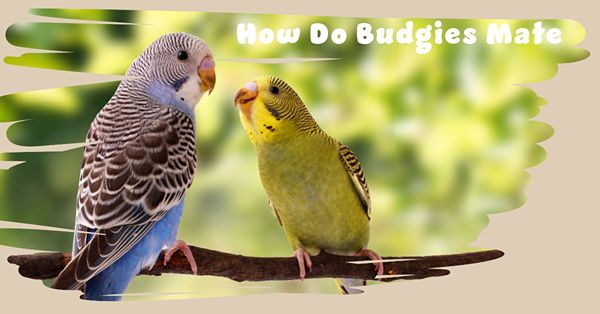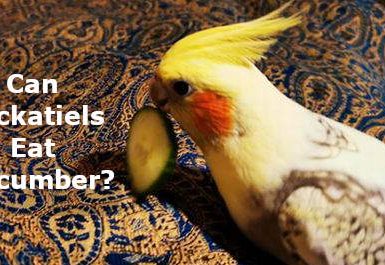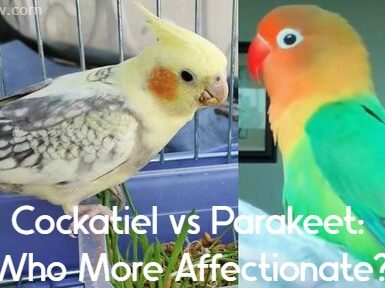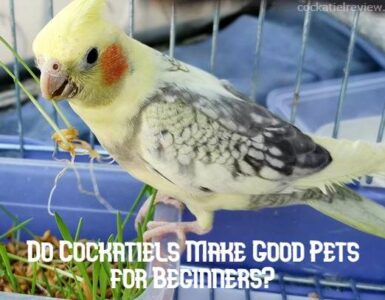
How Budgies Fix Couples: Advice and Tips
Waved Budgies are the most common type of parrot in the world. They are considered well-known pets thanks to their striking appearance, intelligence, and ability to simulate human speech. If you want to introduce your budgies to the world, it is important to know how to properly connect them to get healthy and strong offspring.
In this message we will explain how to choose the best pair for mating, what situations should be done in the room, and how the mating and breeding process proceeds.
If you already have a budgies and want to know how to raise parakeets, or plan to grow only with these very beautiful birds, this article will help. Follow our tips and advice to get healthy and strong babies from your wavy Budgies.
How to breed Budgies correctly
PAAR SELECTION: When selecting a pair, you should consider the color and sex of the birds as well as their characteristics. It is best to have birds of similar size and age.
NUTRITION: Wavy Budgies need enough calories to mate successfully. The menu should consist of a consistency of seeds, fruits, and vegetables of all kinds. It is important that birds have access to fresh water and mineral stones.
Nest: A nest is built for the birds for mating. It should be made from branches and grass, be half round in shape and placed at least 20 cm above the bottom of the cage. The nest can also be filled with wool or feathers to make it more comfortable for the bird.
LIGHTING: Good lighting may greatly increase the chances of successful mating. Birds need 10-12 hours of daylight and 12-14 hours of twilight. This is important to ensure that the light is soft and does not stress the bird.
Urge: After successful mating, the bird begins to lay eggs. The incubation phase lasts 18 days. After release, chicks require specific care and food. They should be fed every 2-3 hours. Adding extra consistency and fruit to the menu can help the mother bird.
Mating Preparation
Important Aristocrats:
- Wavy cockatoos reach sexual maturity at 6 to 8 months of age.
- Before mating, the birds must be thoroughly examined for the presence of any diseases that may be passed on to the offspring.
- Before mating, it is advisable to give the birds vitamins to strengthen their immune systems and improve their productivity.
- It is absolutely essential that the birds be healthy, uninjured, and not severely weakened.
- Mating similar birds is not recommended.
Building Preparation:
- Prepare a separate cage for mating. This must be large enough for two nests.
- The cage should be set up in a warm, dry, medium space that provides mating conditions.
- The cage should be equipped with a feed tray and drinking tray as well as bird branches and other toys.
Partner Selection
- Gender: birds of one sex should be selected for mating. Male wavy Budgies tend to be more colorful and well-behaved than females, but this is not an important aspect of partner selection.
- Age: It is best to link birds of the same age. This is because younger and more mature parakeets may have difficulties with couples.
- Character: When choosing a mate for your parakeet, it is important to pay attention to its temperament and behavior. In particular, choose a bird with a similar temperament and energy level. This will certainly help prevent future incidents.
- Genetic diversity: It is important to cross breed genetically different birds in order to obtain healthy and strong chicks. This will certainly help prevent possible diseases and genetic abnormalities in the offspring. It is recommended to select partners with different genetic inheritance lines.
- General health: select only birds that are healthy and important. If a bird has health problems, it should not be flown out. Before mating, it is advisable to carry out a medical examination of the bird and its partner to prevent possible problems later.
More information on when to mate a bird
It is important to pay attention to how the bird feels when raised and mated. Birds need to be awake and have a good immune system, so regular veterinary checks are necessary to ensure that the bird is in good condition.
Housing conditions are essential to their well being and reproductive function. Adequate space, light, temperature, cleanliness, and humidity must be provided. It is even more important to provide uncontaminated drinking water to the birds, as this is considered the basis of their well-being.
The mating process
– It is important not to disturb or attempt to help the bird during mating.
– The bird’s health should be monitored and a veterinarian called if necessary.
– Once birds become friends, they should not be separated. This will adversely affect their health and may result in death.
Proper preparation of laying hens
Light Environment: a specific light environment must be applied to allow the waved Budgies to mate safely. During the nesting and breeding season, it is recommended to increase daylight hours to 12-14 hours. This will definitely facilitate the first reproductive phase from June to August and increase the energy potential of the birds during the nesting phase.
Proper nutrition: vegetables, fruits and green mass should be prioritized in the menu for laying hens. It is also important to pay attention to the calcium and vitamin content of the menu. Prior to mating, it is important to replenish the calcium stores of the hens to ensure proper shell formation.
Ensure comfort: laying hens should be kept in a room with a temperature of 25-28°C. During the nesting and hatching stages, the temperature should be increased by 2-3°C. Remember to keep the cage clean and make room for the nest.
Caring for the pair after mating
Power
Wave Budgies need to be fed a high quality and varied diet after mating. In addition, it is highly recommended to add calcium-containing foods such as eggshells or special supplements. This will help to anchor the bird’s bones, as the bird grows most intensively during this stage.
Water Supply
After mating, birds should have permanent access to fresh, uncontaminated water. We recommend using an automatic waterer and changing the water regularly.
Clean Cage
The cage should be kept clean and tidy so as not to interfere with the bird’s welfare. Water tanks, waterers, and nest boxes should be cleaned regularly to remove accumulated defects, sanitary equipment (e.g., decking) should be replaced, and nest boxes should also be cleaned as a rule.
Quietness and comfort
After mating, the birds are given time to recover and build their nests. Do not disturb them unnecessarily. Also, ignore sudden movements, clicks, and noises in the cage. Birds can forget their activity toys. For example, ladders, mirrors, and swings have every opportunity to increase the bird’s degree of comfort and amusement.
Increase the menu and take care of the bird’s well
A wavy parrot’s diet should be balanced and include all the calories it needs. Daily menus should include cereals, fruits, vegetables, eggs, and vitamin supplements.
Cereals are considered the bottom portion of the wavy parrot menu. They contain important calories in the form of protein, fat, carbohydrates, minerals, and vitamins. Gyre, oats, wheat and corn are considered the most famous cereals.
Fruits and vegetables are still considered important in the menu of wavy Budgies. They contain vitamins, minerals and antioxidants. Apples, pears, plums, mandarins, kiwis, carrots, zucchini, cucumbers, and greenish lettuce leaves are recommended to offer to Budgies.
Eggs remain relevant on the menu for wavy Budgies because of the protein and other calories they contain. It is recommended that eggs not be offered more than twice a week.
Vitamin supplements have every opportunity to help in case the bird does not remove enough vitamins from their menu. Be careful not to add too many vitamins, however. This is because it can lead to health problems.
Welfare care of wavy Budgies is also important for breeding. It is important to keep the cage and the tools they eat and consume. Their noses and claws should also be cut regularly to prevent injury.
Well recommendations – means that the cage and tools are disinfected, the birds are examined regularly by a veterinarian, and stress management is applied.
Selection of nesting space and cage placement
1. cage location
It is important to thoroughly prepare the cage room prior to mating. Cages should be placed in a small comfortable space that is not drafty and not exposed to direct sunlight. Do not place the cage near other feed or water features to prevent other animals from being harassed.
2. nestkastjeniet
The nest box must be the right size to fit the chicks comfortably. As a rule, it should be at least 30x30x40 cm. For improved hygiene and comfort, the nest box can be covered with printed material or special materials.
3. placement of nesting material
Nesting material is important for insectivorous birds. Nesting materials include leaves, twigs, feathers, haystacks, and other similar materials that help build a home. You can help your own Budgies by providing them with a variety of materials.
– Remember to clean the cage regularly to ensure good hygiene and eliminate the risk of student illness.
– The cage should have adequate partitions and hard-to-reach areas so that the chicks feel protected.
– Set up the nest box well in advance so that the parakeets can become accustomed to it and ready to mate.
Feed and care for the chicks.
Feeding:
- Nest tables should be balanced and supplied.
- The main food sources for young birds are grains, vegetables, and fruits.
- Starting at 3 months of age, chicks can be fed eggs and cottage cheese.
- Remember to provide the chicks with fresh water.
Care:
- Keeping the chicks’ cage clean is increasingly important for their health and development.
- Cages should be cleaned regularly and beds should be changed.
- The health of the chicks should be monitored and a veterinarian should be contacted in case of illness.
- Make sure there is enough space for the chicks to play and have fun so they do not feel lonely.
How do I choose the appropriate chick food?
Choosing the right chick food plays an important role in the menu of a fluttering parrot. It must contain all the right ingredients for the health and recovery of the chicks.
– Pay attention to the composition of the feed – it should contain all the necessary vitamins and minerals.
– Select feed appropriate for the age of the bird. Chicks have special cases that need to be considered.
– Do not forget supplements – fruits and vegetables are considered necessary additions to the main diet.
Important note:
Never feed birds human food. This is especially harmful to their health and can lead to death.
Feeding Schedule and Care of Chicks
Feeding:
– For the first 2-3 days, chicks will eat only a semi-liquid mixture of foamy eggs, water, and soaked ground chicken meat.
– Additional ingredients are added to the menu starting on days 3-5. Green grass, fruits, nuts, boiled legumes, grains.
– At one-half of the day nestlings born are fed 5-6 times a day, 2x-4 times a day.
– Feeding regime may vary depending on the number of nests and age young.
Care:
– Only feed the youngsters what they can eat at one time, as too much food can lead to digestive problems and even death of the chicks.
– Make sure chicks are using proper heating conditions, e.g., hot water rods or electric cushions.
– Keep nest boxes clean and replace stuffing in time.
– Do not remove chicks from the nest unless they are in danger.
Important:
It is not recommended to take pictures of the mother chick at 2 to 3 months on Day 1.
More information on raising and socializing chicks
Preferred Measurement
At birth, chicks are unprotected and require special care. They literally have no protective features like protective feathers, and reside in a good sleeping state most of the day. They should get plenty of sleep and rest on a good diet.
It is important to maintain a consistent, supplemental diet and ignore menu changes. Make sure the birds accept all vital nutrients and are not deficient in vitamins and minerals.
Socialization is a critical period in chick development. You need to address the chick daily by talking to it and moving it from one room to another. This will certainly help the chick adapt to the fresh environment and is the first step in socialization with people.
- Moving the nest from one room to another gives them a chance to get accustomed to the definitive other situations around them.
- Communication with the parents is also fundamentally important. They give the chicks heroic examples and show them how to reproduce successfully.
Be persistent and do not rush the process. Budgies are autonomous individuals and will sort it out on their own when ready. Helping and supporting the family and communicating with the bird are the most important aspects of successfully raising and socializing a chick.
Answers to Questions:
Q: How do you know if a wiggly parrot is ready to mate?
ANSWER: age is considered one of the symptoms. A parakeet is sexually mature when he is 9-12 months old. You will also notice that the birds begin to get to know each other more positively, saturate each other and climb on each other’s backs.
Question: How do you choose the right couple for a wavy budgie?
ANSWER: You should choose a partner based on temperament and social behavior. A good couple will consist of birds that complement each other and talk to each other more actively. Off course, do not select two males or two females.
Question: How do you ensure the right table when mating budgies?
Answer: The table must be sumptuous and different. On the menu must be cheerful vegetables, fruits, grains, plant stems and leaves.
Question: How long does the mating process take a budgie?
ANSWER: The mating process can take from a few days to several months. Birds have the opportunity to spend a few days at the breeding site, getting to know each other and nurturing themselves. The most important symptom of the end of mating season is a relaxed egg.
Question: How often can wavy budgies mate?
ANSWER: They can accompany a couple at least once a year. This provides important relaxation and entertainment for the birds. Apart from that, very irregular pairings can lead to bird fatigue and poor health.






Add comment